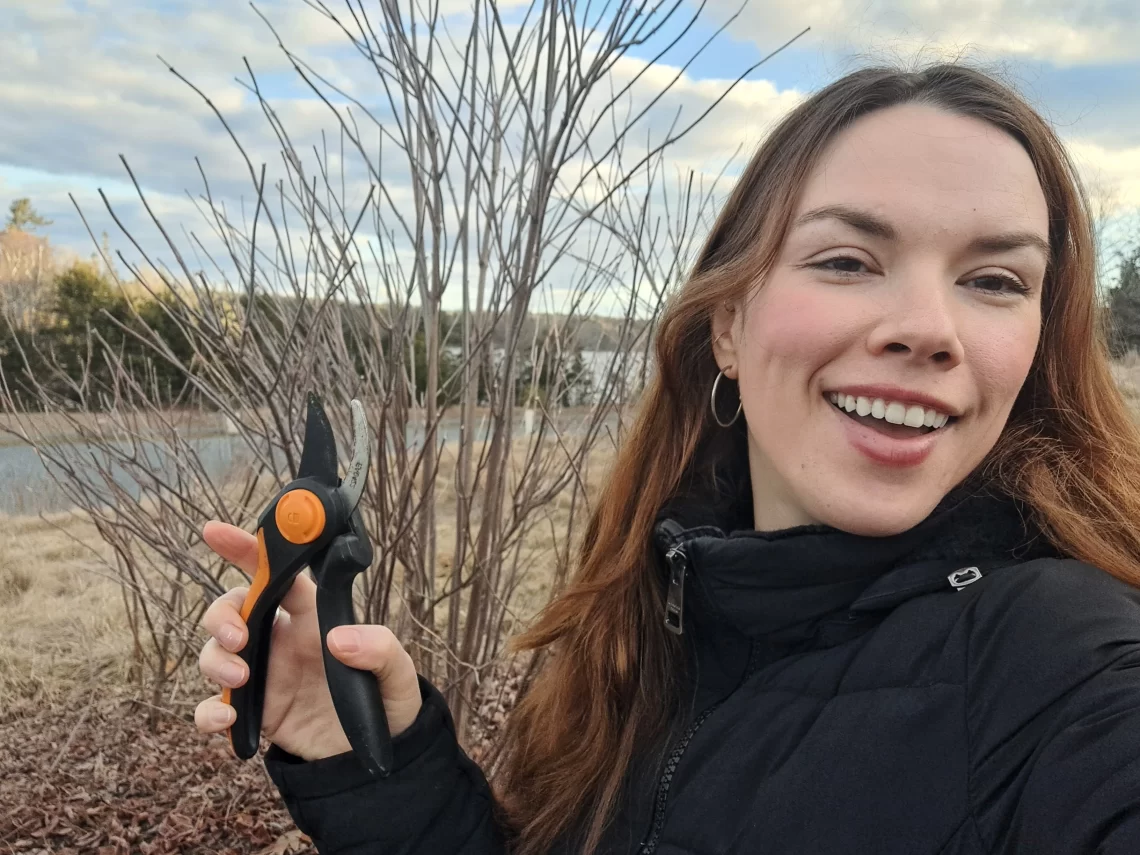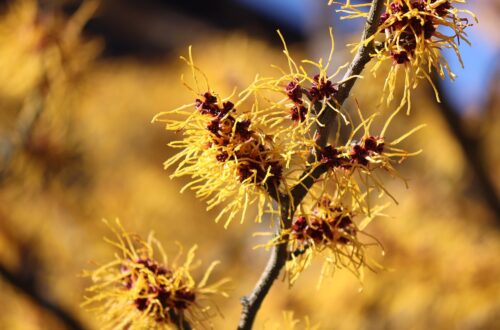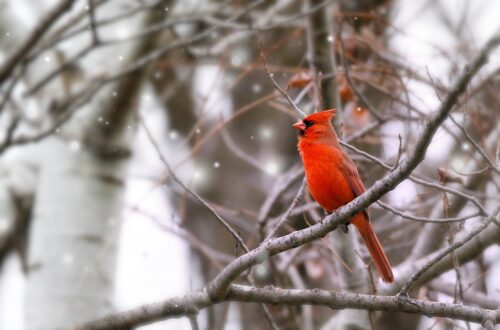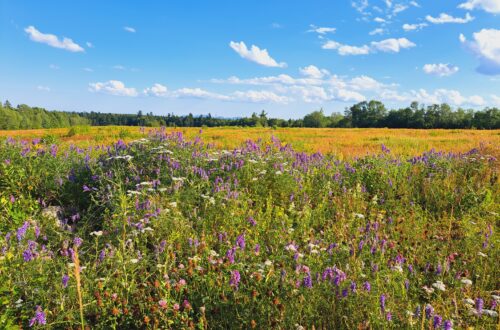Discover the basics of spring pruning and take the guesswork out of pruning perennials, trees, and shrubs!
Many growers find pruning to be an intimidating topic, but spring pruning is easier than you think. By understanding the general needs of plants and when to prune them, you can avoid common pruning mistakes and help your plants grow and flower better. Best of all, pruning in spring (rather than fall) can help pollinators and other wildlife!
Affiliate disclosure: As an Amazon Associate, I may earn commissions from qualifying purchases.
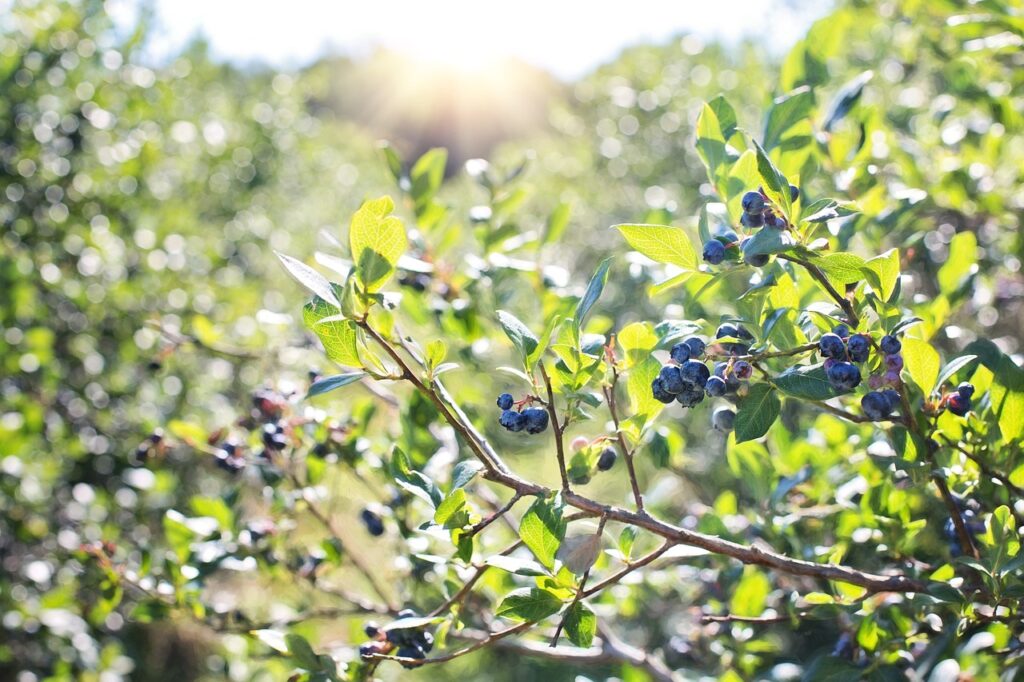
How Pruning Benefits Plants
- Improved plant shape. Pruning can be used to nip away wayward stems, shape plants into tidy forms, or even mold plants into fun topiary shapes!
- More light and air flow in the center of the plant. Pruning opens up the center of plants so more light and air can reach those inner branches.
- Better fruiting and flowering. Cutting plant stems in the right way encourages plants to produce more flowers and fruit.
- Reduced disease. Thinning extra stems improves air flow and can protect plants from diseases, like powdery mildew!
- Manage plant size. Pruning can also keep plants small, so they fit in small flower beds or containers.
- Enhanced growth and bushier plants. Cutting plants at a leaf node jumpstarts growth and can make plants branch out and produce more leaves.
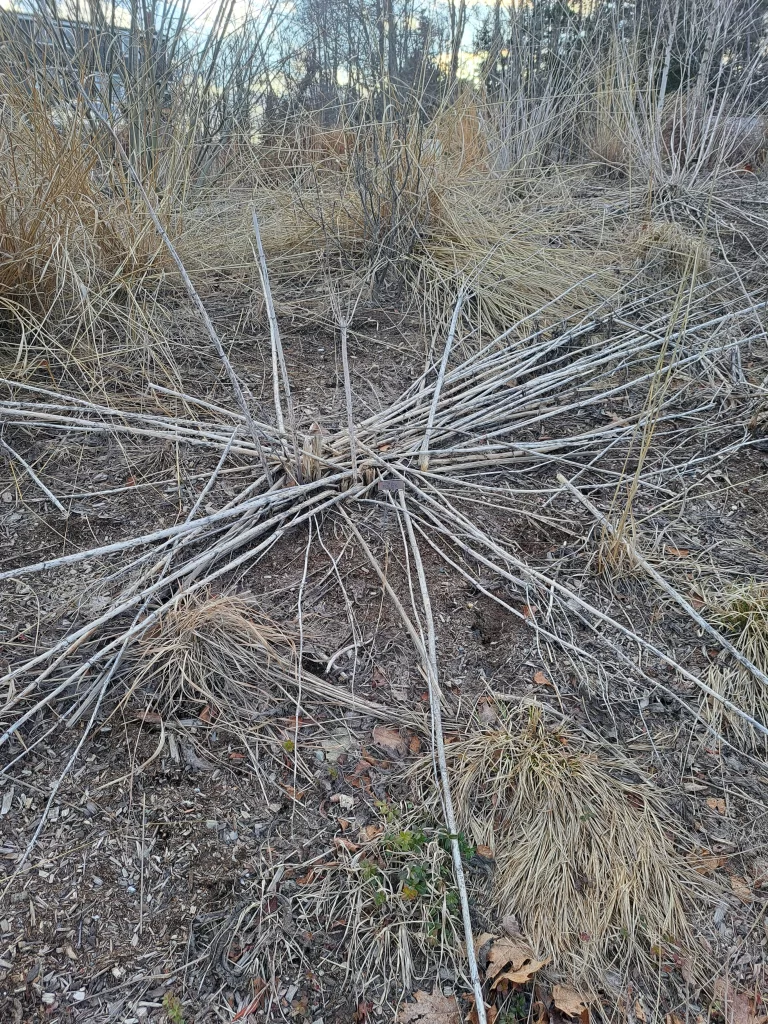
Spring vs. Fall Pruning: Which One’s Better?
It’s important to always research the pruning needs of particular plants as some plants need to be pruned in fall, others in spring, and some don’t need pruning at all!
That said, spring pruning is generally recommended over fall pruning for most plants as it doesn’t expose plants to as much winter injury, and it helps plants heal faster. Not to mention, spring pruning benefits pollinators and wildlife that overwinter in old leaf litter and plant matter. And it allows seed-bearing plants to self-sow and feed wild birds, like finches.
So how do you know if your plants need spring or fall pruning? Well, your best bet is to research the specific needs of the plants in your garden and doublecheck if woody-stemmed plants are “old wood” or “new wood.” (Hint: “New wood” and “old wood” don’t apply to tender-stemmed perennials, which aren’t woody!)
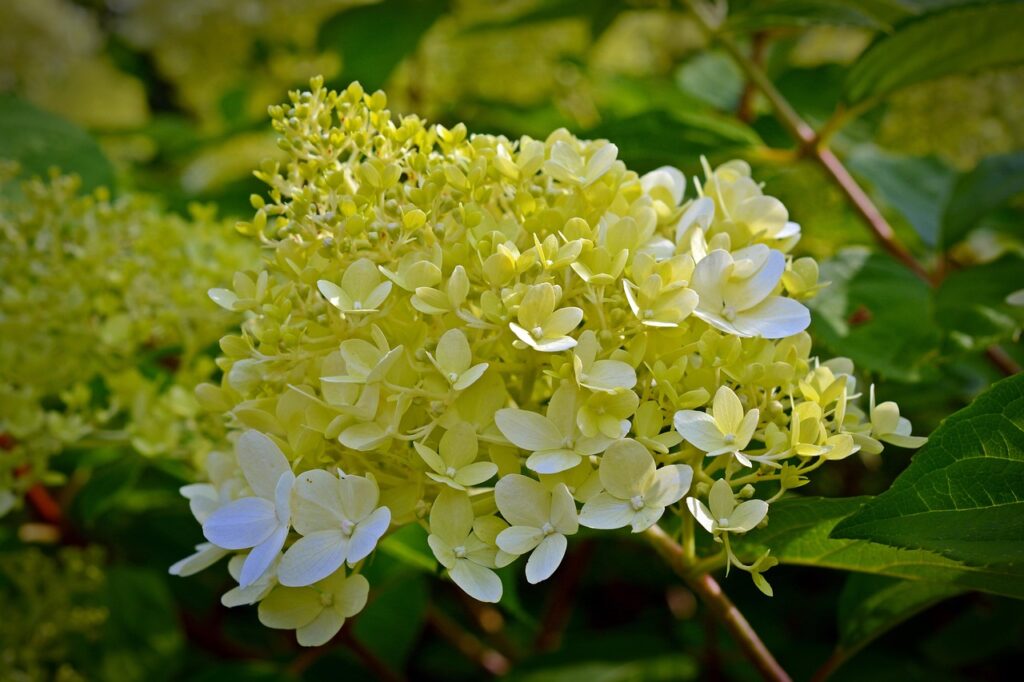
New wood plants, like panicle hydrangeas and butterfly bushes, bloom on new growth that was produced during the current growing season. This trait makes these plants more cold hardy, and it means they usually tolerate spring pruning.
Old wood plants, like mophead hydrangeas, lilacs, forsythia, azaleas, and rhododendrons, produce their flowers on last year’s growth — usually during the summer or fall of the previous year. Unfortunately, pruning azaleas, lilacs, and other old wood plants in spring can remove their flower buds and leave you with bloom-less plants. That’s why most old wood plants should only be pruned immediately after they finish flowering!
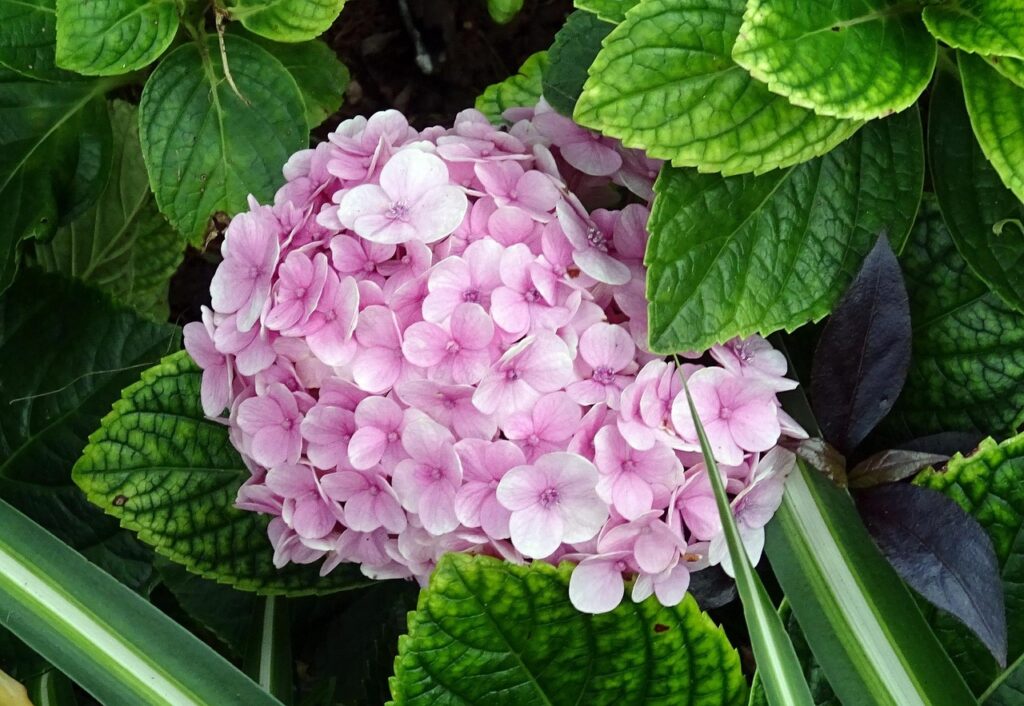
Knowing whether plants are old wood or new wood can help guide your pruning shears. But here are a few more pruning guidelines to remember:
- Plants that flower in spring to early summer should usually be pruned in fall; however, this is not a hard rule and can vary between plants. Always do your research.
- Plants that flower in late summer to fall should usually be pruned in late winter to early spring. But again, this is not a hard rule and a little research is necessary!
- Late winter to early spring is the best time to prune most deciduous trees, evergreen trees, fruit trees, and many perennials. Pruning pine trees and other trees at this time helps them heal faster. However, there are are exceptions — like apricot trees and plants that flower on old wood (which should not be pruned in spring.)
- Many perennials, like daylilies and irises, can be pruned in fall or spring; however, spring pruning is usually best. If you prune these plants in fall, wait until after the plant turns brown with frost. Pruning before this point can interfere with the plant’s ability to store the energy it needs to survive winter, and reduce flowering the following year.
- Some plants, like lavender and rosemary, need time to heal before winter and shouldn’t be pruned less than 6 weeks before frost is expected. These cold sensitive plants usually prefer to be pruned in warm weather, but exactly when they need to be pruned depends on the plant.
- Don’t prune more than 1/3 of your plant’s stems at once — unless the stems are dead or you’re doing rejuvenation pruning (more on that later!) If your plant is really overgrown, prune it in stages until your plant is the size you want it to be. For example: Prune 1/3 of the stems, wait, prune another 1/3, wait, repeat.
- Pruning cuts should usually be made at a leaf node — this can look like a bump on the plant’s stem where a leaf or bud emerges. Pruning at leaf nodes encourages plants to branch out and grow bushier.
- If your plants are dead, damaged, or diseased, throw this rule book out the window and prune the plants as soon as possible to keep issues from spreading. For example: If your apple tree branch broke in a windstorm and is hanging by a piece of bark, remove it ASAP so it doesn’t tear the bark further and cause more damage. If your plant has powdery mildew on a few leaves, removing those leaves can keep mildew spores from spreading too!
Tip: Some trees should only be pruned within a specific time window to limit the spread of disease. For example, if you’re interested in pruning oak trees, you should do it in winter to keep oak wilt from spreading!
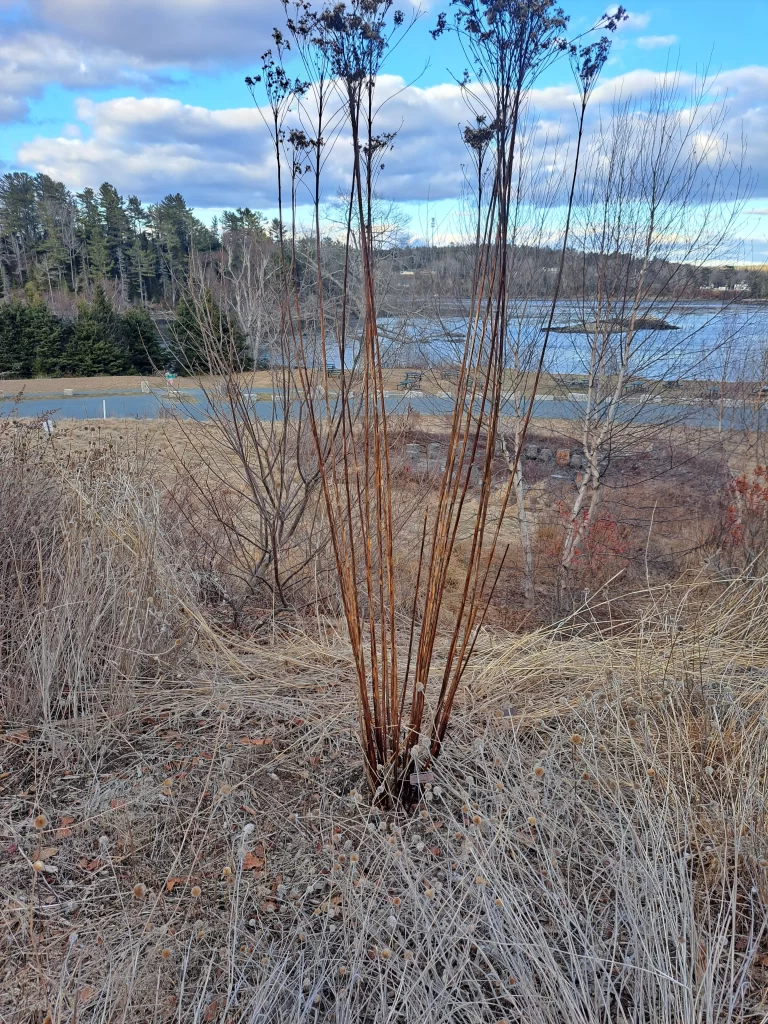
So, When Should I Prune?
If you’re pruning plants in spring, it’s usually best to prune them in late winter to early spring, before the plants starts producing new leafy growth. If your plants have started to leaf out, you may still be able to prune them. But pruning when the plants are actively growing increases the risk that you’ll do damage.
If you’re pruning plants in fall, prune them after the first hard freeze turns the plant leaves brown. That way your plants will have more time to photosynthesize and store energy for next year’s flowers. The exception to this rule is cold sensitive plants, like lavender, which should not be pruned less than 6 weeks before frost.
And, if you’re pruning old wood plants, only prune them immediately after they finish flowering. Unless their specific growing guidelines say otherwise!
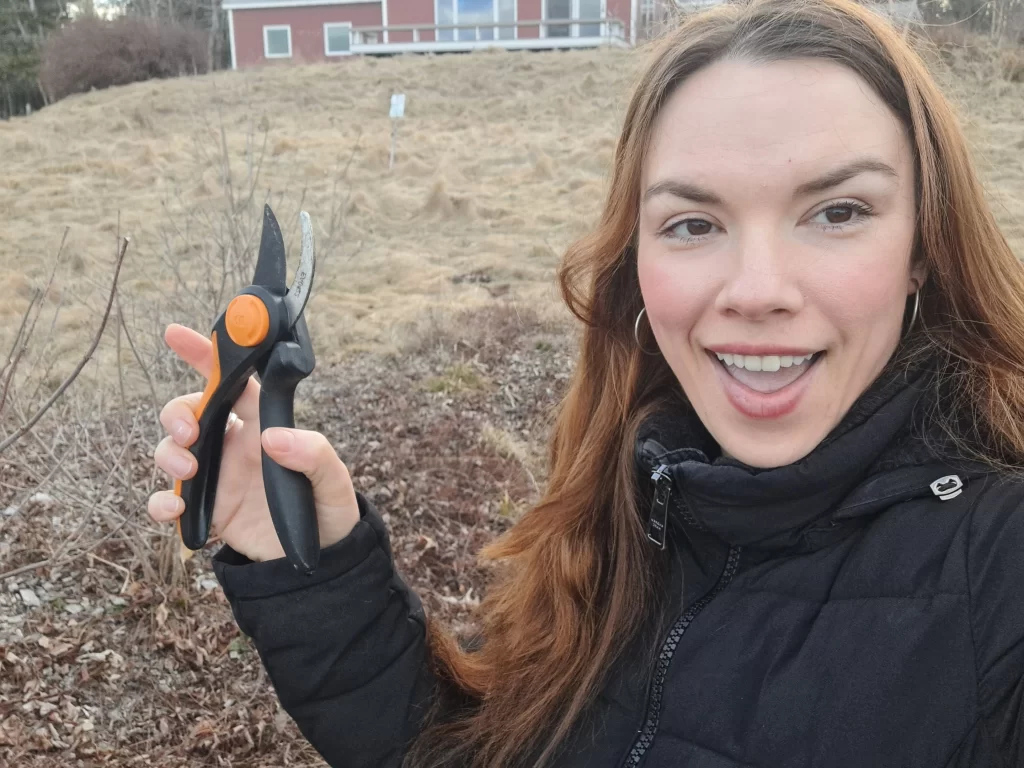
What Pruning Tools Do I Need?
There are a lot of garden tools to keep track of, but when it comes to pruning, you just need a few essentials:
- Pruners. Pruners fit nicely in your hand, and they’re good for small plant stems, thin branches, and grass-like plants.
- Loppers. If you need to trim tree branches that are between ½ and 2-inches around, use loppers.
- Hand saw. Saws are recommended for shrubs and small trees with larger branches. But if you’re pruning tree branches on large trees, work with a professional arborist for safety.
- Gloves. Some grasses have sharp edges, some plants have thorns, and some plants have irritating sap. I use these gloves for most gardening tasks, but leather gardening gloves are recommended for pruning roses and other thorny plants.
- Kneeling pad or stool. Garden stools and kneeling pads can ease back and knee strain…. especially if you’re doing a lot of pruning!
- A sharpening tool. Sharpening tools regularly makes sure your pruning cuts are clean and straight, and limits plant damage.
Once you have your tools in hand, it’s important to make sure your tools are properly maintained. That means scrubbing away rust, sharpening, and sterilizing tools. If you’re new to sterilizing garden tools, keep these tips in mind.
- Regularly sterilizing garden tools keeps plant diseases, like powdery mildew, from spreading.
- At a minimum, garden tools should be sterilized at the end of the growing season and between every plant if you know you’re working with disease or pest-ridden plants. It’s usually wise to sterilize tools at the end of each gardening day too.
- There are two ways to sterilize tools. You can either soak them in a 10% bleach solution for 30 minutes, or spray them with rubbing alcohol and wait 30 seconds. I usually go with the rubbing alcohol method because it’s faster and easier to do in the garden.
- For on-the-go tool sterilization, wipe tools with cotton pads soaked in rubbing alcohol or pour rubbing alcohol into a spray bottle and spray your tools down.
- Remember to dry tools after cleaning and sterilizing to prevent rust.
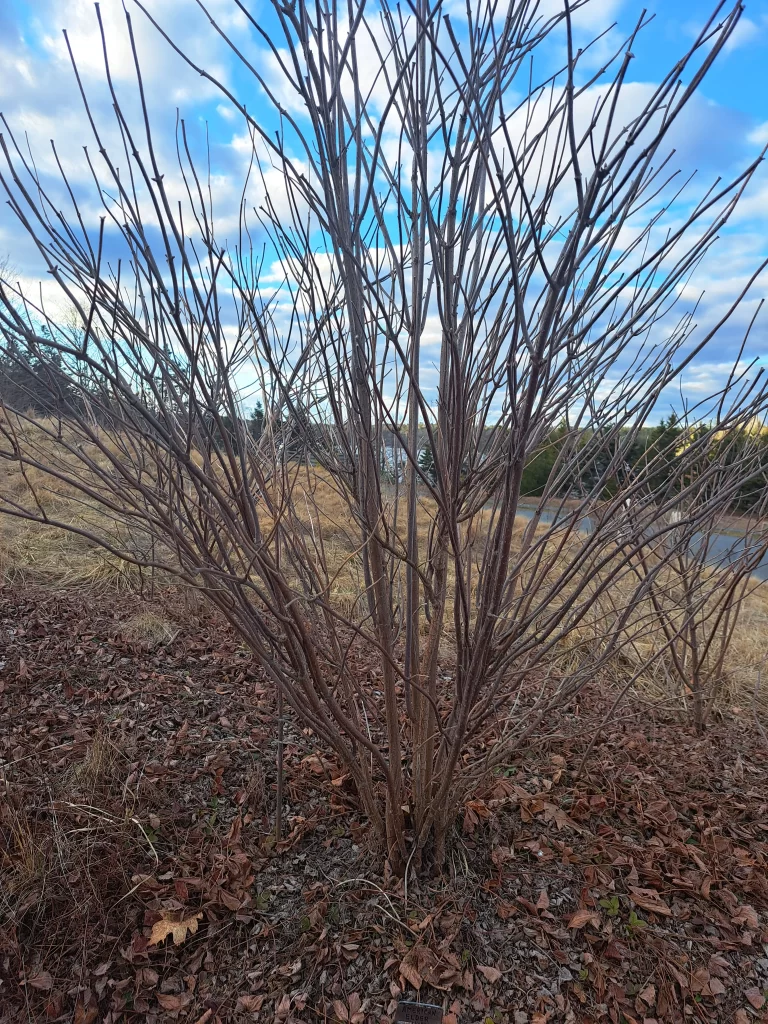
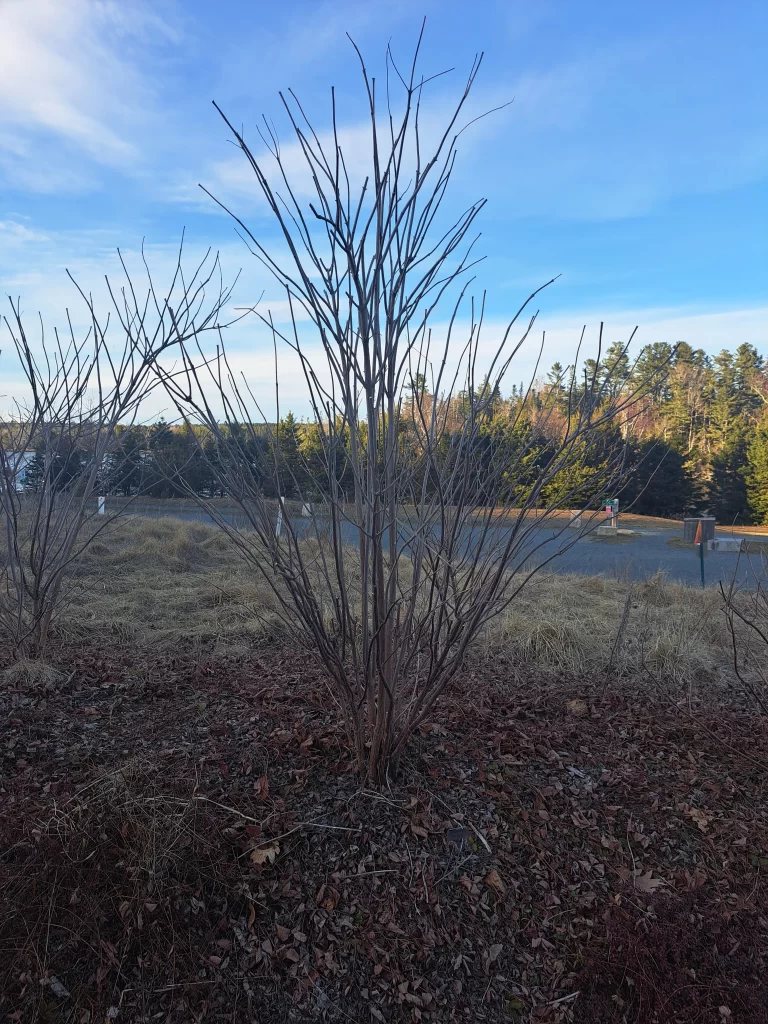
What Kind of Pruning Should I Do?
There are so many pruning cuts and ways to prune plants that I can’t cover them all in this article. Again, it’s a good idea to research the pruning recommendations for the plants in your garden as many of these pruning styles don’t apply to all plants. However, here are some of the most common ways that perennials, trees, and shrubs can be pruned.
- Shaping. Removing just a few branches to improve the plant’s overall shape.
- Rejuvenation. This is a harsh prune that many plants won’t tolerate, so always do your research. This usually involves cutting plants all the way to the ground and is mostly used on plants that are very sickly or overgrown.
- Thinning. Thinning cuts involve removing extra and overcrowded branches so the center of plants can receive more light and air.
- Suckers. These are thin stems that emerge around the base of some plants, like fruit trees. Suckers are usually removed to give the plant more energy to grow leaves, flowers, and fruit.
- Removing other “unhelpful” branches and stems. This includes “water spouts” (stems that grow vertically from a horizontal branch and have weak attachments), crossed branches, weirdly angled branches, overcrowded branches, and branches that rub on each other. These types of branches don’t do much for plants and can actually make plants more vulnerable to damage.
- Damaged, dead, and diseased branches and stems. These should be pruned ASAP to keep problems from spreading.
- Deadheading. Some flowering plants like to have their old flowers pinched away when they fade. This may encourage plants to rebloom.
- Tree topping. This is sometimes done on fruit trees to keep them from growing taller, but it’s not recommended unless you’re sure you know what you’re doing! Tree topping involves cutting the main stem or “leader” off the top of the tree, which stops the tree from growing vertically.
- Prevent self-sowing. Some flowering plants are deadheaded at the end of the season to ensure they don’t self-sow. This is helpful for invasive or weedy plants, but is not recommended for plants like asters and goldenrod that provide food for wild birds in winter!
* Tip: Pruning lavender and some other woody-stemmed plants into their woody sections can cause them to stop growing! These plants should only be pruned on tender, actively growing stems.
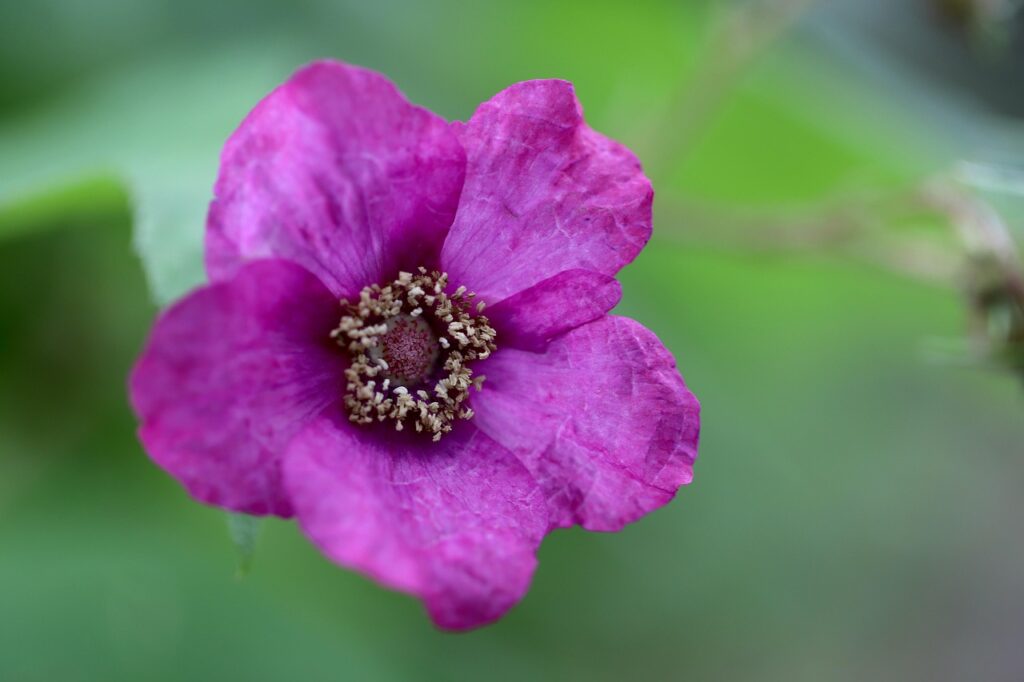
Keeping Pollinators Safe
I have a full guide on how to grow native plants for stem-nesting bees and I definitely recommend that you give it a read as it goes more in-depth into this topic. However, this pruning guide wouldn’t be finished without me throwing in a little word for pollinators!
Ahem! Many native bees sleep in hollow plant stems – like Joe Pye weed and purple flowering raspberry. Cutting these plants too low to the ground in fall (or spring!) can eliminate sheltering spots and harm pollinators. But there are ways to limit damage and keep these pollinators safe.
- Wait until spring to clean up flower beds. Don’t rake until temperatures are consistently in the 50s (F) and avoid applying heavy layers of mulch in spring. Bumblebees often hibernate in the ground and thick mulches can keep them from emerging!
- If you’d normally cut plant stems to the ground, cut them a little taller — about 6 to 18-inches above the soil line. These longer stems provide valuable hibernation spots for stem nesting bees, and they should be well-hidden when the plants fill in.
- Leave this plant stubble in place until it naturally degrades into the soil.
- Repeat this pruning process every year, leaving longer plant stems to provide ongoing support to pollinators.
- Adding pollinator garden signage may help neighbors who don’t love “wilder” gardens to see the beauty of this pruning style!
- If you need to remove hollow or woody plant stems, pile them in a brush pile or dead hedge, so pollinators can still use them for nesting!
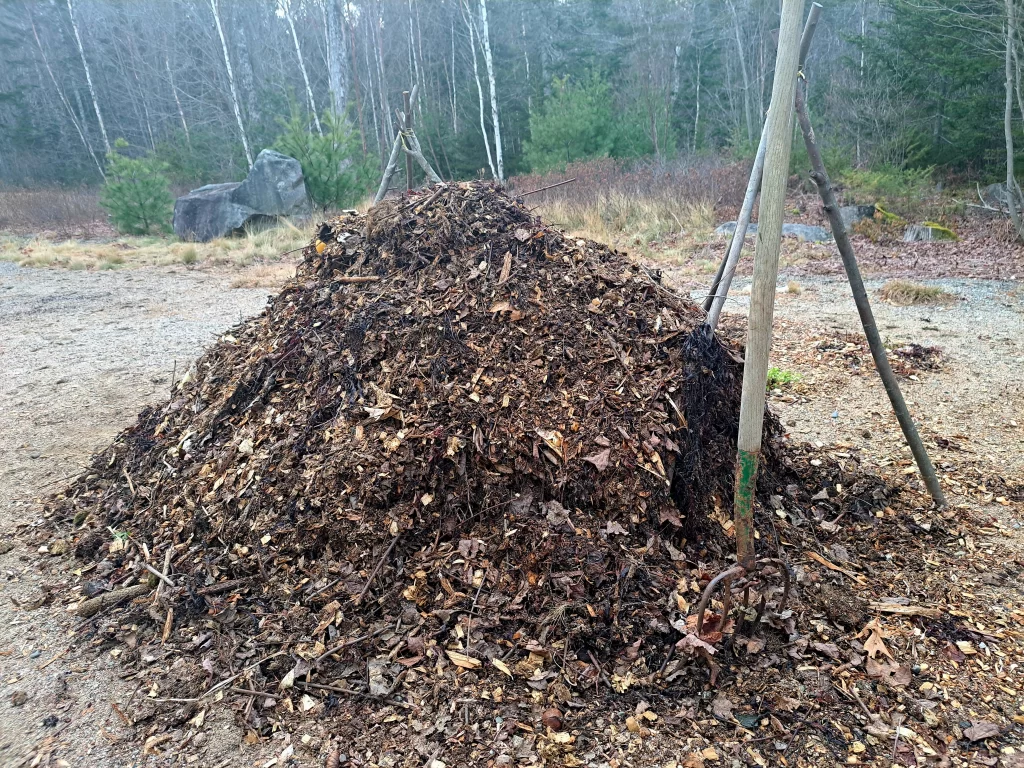
Don’t Throw Out Those Prunings!
I always recommend keeping all garden material on your property if possible as throwing plant stems, leaves, and debris in the trash just channels nutrients away from your garden that could be used to help your plants grow better. And as long as those prunings aren’t from diseased or pest-ridden plants,* you can find plenty of uses for them!
- Compost. Once you’re done pruning plants and trimming trees in spring, save those prunings for your compost pile. Dried plant prunings count as carbon-rich ingredients!
- Make a dead hedge or bug snug for birds and pollinators to nest in. A dead hedge is a simple, natural fence made by pounding sturdy vertical sticks into the ground and weaving smaller branches in between them. A bug snug can be created by tying several branches together in a teepee-like form and piling leaves, small twigs, and other natural detritus inside to shelter pollinators, frogs, and birds.
- Mulch. Prunings can be turned into garden mulch with a mulcher or a mulching attachment on your lawnmower.
- Bury them. You can also directly bury prunings in the garden and allow them to naturally degrade into the soil. This is known as trench composting.
* It’s recommended to burn or bag and trash diseased or pest-ridden plants to keep problems from spreading. I personally either burn them, or I pile them up in an out of the way corner of my garden, allow them to naturally degrade into the soil, and make sure I never use compost from that area.
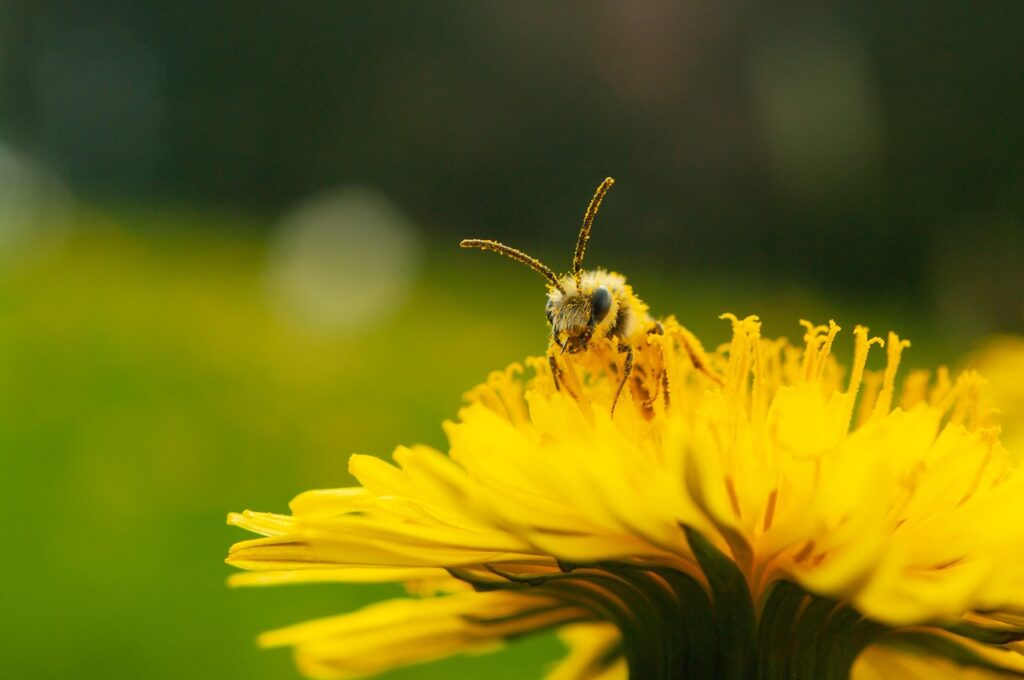
Frequently Asked Questions
When should I do lilac pruning?
Lilac is an “old wood” plant that should only be pruned immediately after it finishes flowering.
What should you not do when pruning?
Unless you’re rejuvenation pruning, you should not prune more than 1/3 of your plant’s stems at once. You should also take care not to prune certain plants at the wrong time!
When should you not prune?
Most plants should not be pruned in summer, unless they’re diseased or damaged, or they bloom on old wood. Pruning plants in high heat increases the chance of heat stress and disease.
